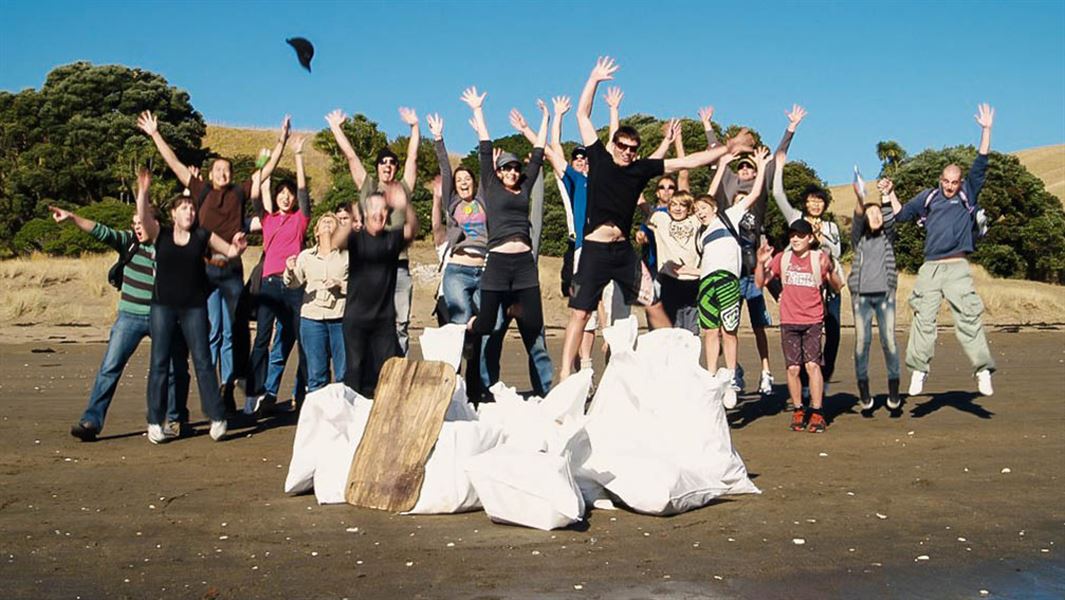Northern Royal Albatross – toroa, are a threatened species. Their main breeding areas are experiencing decline. There are only 4 breeding sites for toroa in the world which makes them vulnerable to potential extinction.
There are many things you can do to help protect them and other sea wildlife who need on healthy oceans. Find out how using our list below.
By taking steps like those below, you join the Royal Cam kaitiaki community. Kaitiaki is a te reo Māori term in New Zealand for guardianship of the natural world. ‘Kai’ means someone who carries out an action, and ‘tiaki’ means to guard, preserve, or protect.
Volunteer to reduce risks to albatross
You can help protect albatross and other seabirds by helping work reduce the risks they face by volunteering to:
Clean up a beach or restore coastline
Find a beach clean-up or coastal restoration opportunity in New Zealand through DOC, eventfinder, or charity and community groups in your area.
Beach clean-ups reduce the plastic that ends up in the sea. Albatross have starved because they’ve mistaken plastics for food while foraging at sea. It stays in their stomach and can stop them eating. Restoring coastline also improves nesting habitats for sea birds.
Support a survey or record a sighting
Support a survey by contacting local groups performing them or report single sightings to help. You can record single sighting in New Zealand or for many other countries by using the links below:
Recording how and where seabirds use habitats can help us to understand the health of our coasts. Identifying certain birds in an area, like shags, tells us know how healthy our waters are too. This helps guide us to do the right work to protect seabirds and more.
Join a predator control group to protect nests and chicks
At Pukekura/Taiaroa Head, we maintain traps for stoats, rats, and other predators. The trapping in this area is probably the longest running predator control programme in New Zealand.
Rats, stoats and other introduced predators fit into their original habitats in other countries. But in New Zealand, our native species evolved without ground predators. So they never developed ways to defend against them. This includes our ground nesting albatross eggs and young chicks.
To help protect them and other native species, New Zealander’s can:
Protect albatross’ food sources
Reduce the effects of climate change
Studies suggest albatross could struggle to find food due to warmer seas caused by climate change. One study predicted this could cause less fledgling and young albatross to survive.
Help by taking action to reduce climate change effects such as warmer seas by:
- using this guide from the Ministry for the Environment
- taking steps on the United Nations' lazy person's guide to saving the world.
Choose sustainable seafood
Buy sustainable fish and seafood at supermarkets or in restaurants. This makes sure the food we eat does not remove too many fish or seafood from the sea and leave albatross hungry.
For New Zealander’s, Forest & Bird NZ offers a free app or PDF guide to help you make sustainable seafood choices. Download the Best Fish Guide 2017 (PDF, 603K).
Support a conservation group
If you want to support work for New Zealand’s royal albatross and other native species, you can also donate to one of the following:
- Chatham Islands Tāiko Trust
- Southern Seabird Solutions Trust
- Forest & Bird
- Otago Peninsula Trust
- Dunedin Wildlife hospital
Raise awareness through education
Royal cam is a great opportunity to engage kids in conservation. If your students have enjoyed watching Royal cam in the classroom, you might find the following teaching resources useful.
